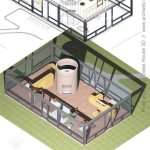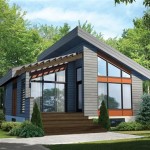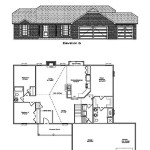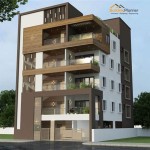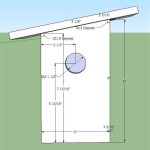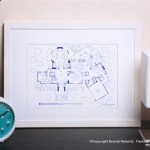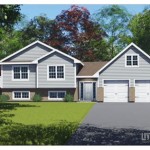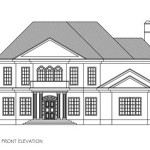Tudor House Plans of the 1920s: A Revival of Timeless Elegance
The 1920s, a period marked by economic prosperity and cultural dynamism, witnessed a significant resurgence of architectural styles from earlier eras. Among these revivals, the Tudor Revival style stood out, offering a romanticized and idealized vision of English domestic architecture. This article explores the key features and defining characteristics of Tudor house plans prevalent during the 1920s, shedding light on their enduring appeal and the factors that contributed to their widespread adoption across the United States and other regions.
The Tudor Revival was not a direct copy of original Tudor buildings; rather, it incorporated elements and motifs inspired by Tudor architecture (roughly 1485-1603) and combined them with modern construction techniques and building materials. The result was a distinctive style that catered to the desire for homes that conveyed a sense of history, craftsmanship, and established wealth. These homes, while evoking a historical aesthetic, were designed to meet the comfort and convenience expectations of the early 20th century.
Key Point 1: Defining External Features of 1920s Tudor House Plans
The exterior of a 1920s Tudor Revival house is often the most recognizable and defining aspect of the style. Several key features contribute to its distinctive appearance:
Steeply Pitched Roofs: A defining characteristic of Tudor houses from this era is the presence of steeply pitched roofs, often with multiple gables. These gables could be front-facing, side-facing, or dormered, creating a visually dynamic roofline. The steep pitch served a practical purpose in colder climates, allowing for efficient snow shedding, but was also retained for its aesthetic appeal.
Half-Timbering: Perhaps the most iconic feature of Tudor Revival houses is the decorative use of half-timbering. This involved applying dark-stained timbers to the exterior walls, creating a contrasting pattern against light-colored stucco or brick infill. The timbers were typically non-structural, serving purely as ornamentation, but effectively evoked the look of traditional timber-framed buildings. The patterns could range from simple vertical and horizontal lines to more elaborate diagonal braces and decorative panels. Often, this half-timbering was confined to the upper stories or gable ends of the house.
Brick and Stone Detailing: While half-timbering provided a distinctive visual element, brick and stone were also commonly used in the construction of Tudor Revival homes. Brick was particularly popular for the lower portion of the exterior walls, providing a solid and durable base. Stone, often used for quoins (cornerstones), window surrounds, and entryways, added a touch of grandeur and visual interest. The use of different colors and textures of brick and stone could further enhance the overall aesthetic.
Tall, Narrow Windows: Windows in 1920s Tudor houses were typically tall and narrow, often arranged in groups or banks. Leaded glass, with small panes of glass held together by lead strips, was a common feature, adding to the old-world charm. Casement windows, which swing outward on hinges, were also popular, reflecting the European influence of the style. The placement of windows was carefully considered to maximize natural light while maintaining the privacy of the occupants.
Prominent Chimneys: Large, decorative chimneys are another hallmark of Tudor Revival architecture. These chimneys were often constructed of brick or stone and could be further embellished with corbels, chimney pots, or other decorative elements. The prominence of the chimney served as a visual focal point and emphasized the importance of the fireplace as a central feature of the home.
Arched Entryways: Many Tudor Revival homes featured arched entryways, often framed with brick or stone. These arches added a touch of formality and elegance to the entrance, creating a welcoming and inviting feel. The entry doors themselves were often made of heavy wood, sometimes adorned with decorative iron hardware.
Key Point 2: Interior Layout and Design of Tudor Houses
The interior layout of 1920s Tudor houses reflected the desire for comfortable and functional living spaces, while still maintaining a sense of historical character. While open floor plans were not yet prevalent, there was a clear emphasis on creating distinct rooms for specific purposes.
Formal Living and Dining Rooms: Formal living and dining rooms were essential components of Tudor house plans. These rooms were designed for entertaining guests and showcasing the homeowner's social status. Living rooms often featured large fireplaces, comfortable seating arrangements, and decorative details such as wood paneling, beamed ceilings, and ornate lighting fixtures. Dining rooms typically included a large dining table, chairs, and a sideboard or buffet for serving meals. The detailing matched the overall aesthetic of the house, with heavy use of wood and traditional patterns.
Separate Kitchens: Kitchens in 1920s Tudor houses were typically separate from the main living areas, reflecting the societal norms of the time. While not as elaborate or spacious as modern kitchens, they were designed to be functional and efficient. Features such as built-in cabinets, sinks with running water, and gas or electric stoves were becoming increasingly common. Pantries were often included to provide ample storage space for food and kitchen supplies. The kitchens, while functional, often incorporated design elements that tied them into the overall aesthetic of the house through cabinetry and hardware details.
Bedrooms and Bathrooms: Bedrooms were typically located on the upper floors of the house, providing privacy and separation from the main living areas. Bathrooms were often small and functional, but included essential amenities such as a bathtub, toilet, and sink. The number of bedrooms and bathrooms varied depending on the size and layout of the house. Bathrooms increasingly featured tiled walls and floors for ease of cleaning and sanitation.
Wood Paneling and Trim: Wood paneling and trim were extensively used throughout the interior of Tudor houses, adding warmth, character, and a sense of historical authenticity. Wainscoting, chair rails, and crown molding were common features, as were beamed ceilings in living rooms and dining rooms. The type of wood used varied depending on the homeowner's preferences and budget, but oak, walnut, and mahogany were popular choices. The dark, rich tones of the wood contributed to the overall atmosphere of warmth and sophistication.
Fireplaces: Fireplaces were a central feature of Tudor houses, providing both warmth and visual appeal. They were often located in living rooms, dining rooms, and sometimes even bedrooms. Fireplaces were typically constructed of brick or stone and could be further embellished with decorative mantels, surrounds, and hearths. The fireplace served as a focal point for the room and created a cozy and inviting atmosphere.
Key Point 3: Regional Variations and Influences
While the Tudor Revival style maintained certain core characteristics, there were regional variations and influences that shaped its expression in different parts of the United States and beyond. Local building materials, climate conditions, and architectural traditions all played a role in shaping the specific features and details of Tudor houses in different regions.
East Coast Adaptations: In the Northeast, Tudor Revival homes often incorporated elements of the Colonial Revival style, resulting in a hybrid aesthetic that blended historical influences. These homes might feature clapboard siding alongside half-timbering or incorporate Colonial-style window patterns. The availability of local stone also influenced the design, with many East Coast Tudor houses incorporating substantial amounts of stone masonry.
Midwest Interpretations: In the Midwest, Tudor Revival homes were often built with brick as the primary exterior material, reflecting the abundance of brick manufacturing in the region. These houses might feature more restrained use of half-timbering and incorporate elements of the Arts and Crafts style, such as exposed rafter tails and built-in cabinetry. The landscape of the Midwest also influenced the design, with larger lots allowing for more expansive gardens and landscaping.
West Coast Variations: On the West Coast, Tudor Revival homes were often influenced by the Spanish Colonial Revival style, resulting in a unique blend of architectural traditions. These houses might feature stucco exteriors, red tile roofs, and arched doorways, combined with Tudor-style half-timbering and window patterns. The mild climate of the West Coast allowed for greater emphasis on outdoor living spaces, such as patios and courtyards.
Influence of the Arts and Crafts Movement: The Arts and Crafts movement, which emphasized craftsmanship, simplicity, and the use of natural materials, also exerted a significant influence on Tudor Revival architecture. Many Tudor houses incorporated Arts and Crafts elements, such as exposed wood beams, handcrafted details, and a focus on integrating the house with its natural surroundings. This influence helped to soften the formality of the Tudor style and make it more accessible to a wider range of homeowners.
The Tudor Revival style, as expressed in the house plans of the 1920s, represents a fascinating blend of historical inspiration and modern adaptation. These homes, with their distinctive exterior features and thoughtfully designed interiors, offered a romanticized vision of English domesticity that resonated deeply with the aspirations of many Americans. The regional variations and influences further enriched the style, ensuring its enduring appeal and continued relevance in the architectural landscape.

1920 National Plan Service Vintage House Plans Tudor Style Homes

1920 National Plan Service Cottage House Plans Vintage Sims

Bilt Well Homes Of Comfort Tudor House Vintage Plans

1920 National Plan Service Sims House Plans Vintage 4 Design

1920 National Plan Service House Blueprints Sims Plans

English Tudor Revival 1923 Morgan Building With Assurance Stucco Half Timbering

Seattle Homes Tudor Style House Plan Design No 132 1908 Western Home Builder Victor W Voorhees

Welcome To Dover Publications Tudor House Vintage Plans

The Stratford English Revival Tudor Style 1923 Standard Homes Company Vintage House Plans Of 1920s

Radford Colorkeed Home Plans Vintage House Sims Cottage

